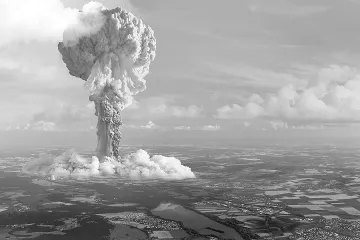CNA Staff, Oct 2, 2024 / 06:00 am
The Catholic University of America’s (CUA) Vitreous State Laboratory (VSL) recently received a $31 million four-year contract to help the U.S. Department of Energy (DOE) with a massive nuclear waste cleanup effort at a storied research site in Washington state.
The VSL, founded in 1968, assists with nuclear cleanup efforts in areas around the country by researching safer and more cost-effective methods of converting waste into glass — a process called vitrification — which immobilizes and stabilizes the hazardous material so it can be stored safely.
Located on the campus of CUA in Washington, D.C., the VSL has been assisting with cleanup at the Hanford site in Benton County, Washington, since 1996.
According to the Environmental Protection Agency, the Hanford site consists of a 26-square-mile piece of land located 35 miles north of Richland, Washington, along the Columbia River, where nine water-cooled plutonium reactors were constructed between 1943 and 1963.
While operational, the site supplied plutonium to the Manhattan Project, which produced the atomic bombs used against Japan at the end of World War II.
The last of the nine reactors ceased operations in the late 1980s. While they were operating, the facilities dumped contaminated water containing radioactive materials into the Columbia River and into the surrounding soil and groundwater.
The goal for the current project is to convert 56 million gallons of radioactive waste currently stored in 177 aging underground tanks at the site into glass. To do this, the Department of Energy contract will see the VSL collaborate with several other agencies to construct the largest nuclear waste vitrification facility in the world, the Hanford Waste Treatment and Immobilization Plant.
The VSL has received grants worth millions of dollars in the past for Hanford site projects, but this is the largest single award yet, according to a CUA press release. The VSL maintains the largest collection of glass melters in the United States, including a 30-ton, one-third scale prototype of the glass melters that will be used at Hanford.
“This contract is a real vote of confidence in what we have done in the past and our capabilities going forward,” said Ian Pegg, VSL director and professor of physics at CUA. “It’s a recognition of the expertise, experience, and unique facilities of the VSL.”
The yet-to-be-built high-level waste facility will melt waste using glass-forming chemicals in two large melters operating at 2,100 degrees Fahrenheit. The molten glass will then be poured into stainless steel containers for interim safe storage, prior to permanent disposal, the press release continues.
Testing of the system without radioactive waste is expected to begin by 2032.
In addition to Hanford, VSL conducts research and development for nuclear waste treatment programs at sites in South Carolina and Idaho as well as abroad at sites in the U.K. and in Japan.






